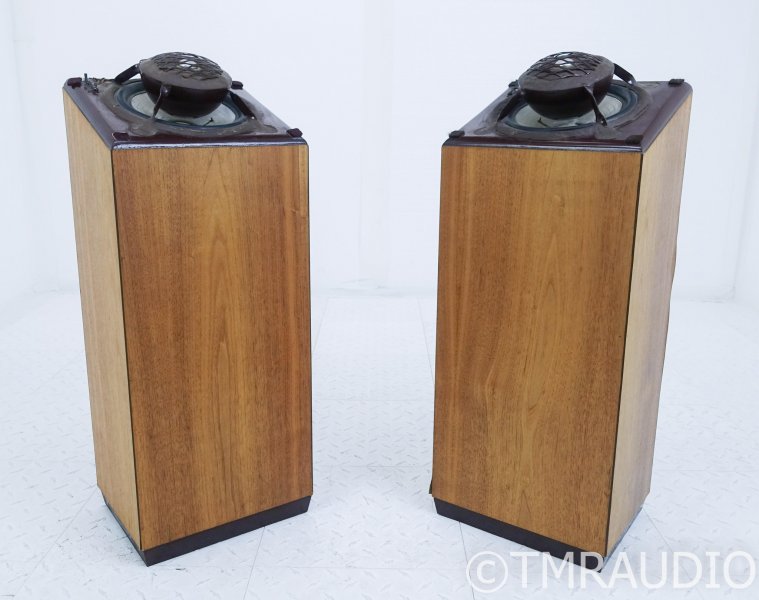Thanks for initiating this thread, Ron, and for your counter reply to Mr. McGowan.
Paul is correct that with only low wattage tube amps available back in the day, speakers had to be very efficient to convert those meager watts into high acoustic output, and hence they needed to be horn-loaded and very large. Bear in mind that those speakers had to fill out very large listening spaces like cinemas etc., and in that light it's quite impressive what they were able to do with only so much amp power at hand.
Today however prodigious amp power can be had in almost unlimited quantity - actually it's an inverted scenario compared to the development in speaker sensitivity over the years, certainly for domestic use: modern amps, not least Class-D variants are now much more efficient producing watts - i.e.: with less heat, lighter in weight and using less power to make more power. This again goes hand-in-hand with the considerably smaller and low efficiency speakers of today that are in need of more power, though not necessarily calling for the most efficient amp topology around today.
One thing though is the better efficiency of modern amps to produce more power, but at the receiving end at the speakers watts are still watts; only so much heat can be dissipated before thermal issues arise, not least and likely more relevantly as an audible effect in the transient domain. I think of it as a 1-10W light bulb compared to a 100-1kW ditto - this is how it's handled in the voice coil and passive cross-over components of the speakers as it applies to their very efficient vs. low efficiency iteration for a given SPL.
That is to say: one doesn't just freely compensate low efficiency in speakers with more amp power, as it comes with a price: heat build-up and eventually thermal compression, or (and I believe this term was "coined" by Mr.
@Duke LeJeune): thermal
modulation, which relates to the dulling of transient behavior due to "peak heat-up" as the perhaps more prevalent and audible side effect vs. compression that ends up frying the VC's and XO components due to excessive heat.
As a statement against the need for high efficiency many an audiophile appears to point at the rarity of the latter scenario (thermal compression) in the paragraph above, while failing to realize the former (thermal modulation) - a sentiment I believe applies to Mr. McGowan. The less restricted transient behavior in high eff. speakers typically comes off as an "aliveness" or sense of ignition in their sound, which may also be described with a better micro dynamic ability, also audible at lower SPL's.
Acoustic transformers, which horns essentially are, doesn't always across without imposing their own sonic imprinting, be that for reasons of the horn profile itself, material resonances (and their nature/frequency) or other. That 'other' may also have to do with their dispersive nature and the degree of reflected vs. direct sound, as well as the way their cone/diaphragm couples to the air and excites it compared to a direct radiator. The latter aspects are
differences in presentation, but even so may be misconstrued as colorations or other unwanted horn artefacts that are really just about what differs from the habitual exposition to low eff. direct speakers where reflected sound is more prominent.
Do we need high sensitivity in speakers in domestic milieus today with the plentiful of amp power at hand? Yes, I most certainly believe we do, as hopefully some of the above explains. While I wouldn't necessarily pair them exclusively with low wattage amps (but also with higher powered solid state variants, actively), it seems to me this segment of speakers, usually horn-loaded, potentially offer qualities more inherently linked to a live-like, physically immersive presentation that smaller, low eff. direct radiating speakers simple can't replicate.

















